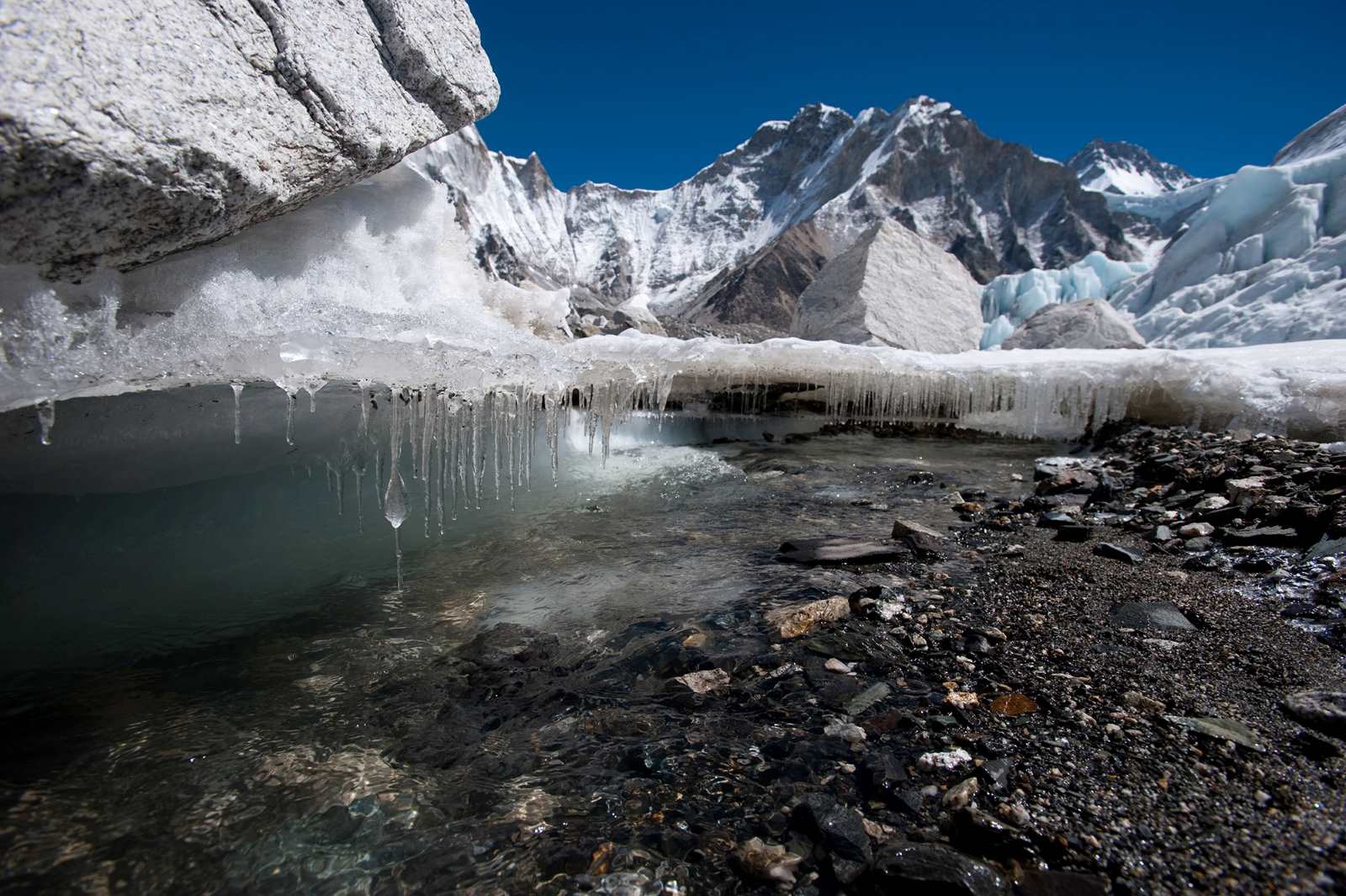Hindu Kush Himalaya
Safeguarding threatened ecosystems

The Hindu Kush Himalaya (HKH) region has four global biodiversity hotspots: the Himalaya, the Indo-Burma, the Mountains of Central Asia and the Mountains of Southwest China. They exhibit a rich diversity of ecosystems, including high-elevation rangelands, wetlands and peatlands, which host an abundant wildlife. Some species are endemic, which means they can be found nowhere else on Earth.
The HKH’s cryosphere – glaciers, permafrost and other frozen areas – helps to maintain ecosystems functional and support biodiversity. This, in turn, is crucial for the direct and indirect benefits people obtain from ecosystems, including nature-based trade, health aspects and tourism. Such benefits are called ecosystem services.
However, the cryosphere is changing significantly. The change induced by the climate crisis is directly putting at risk people in mountainous areas as well as farmers downstream who depend on these water resources for drinking and irrigation, as the International Centre for Integrated Mountain Development (ICIMOD), an intergovernmental organisation, points out in a report. The authors stress that these changes have severe impacts on ecosystems and biodiversity. This affects communities as well since their lives are intertwined with nature.
HKH member countries have already made important efforts to safeguard biodiversity. More than 40 % of the HKH region are protected. However, 39 % of the global biodiversity hotspots are still outside protected areas. This makes it harder to safeguard them not only from climate change but also from anti-environment policies, land-use change, pollution, introduction of invasive species and expanding markets.
Such dangers are a major threat to biodiversity. It is estimated, for example, that nearly a quarter of the species endemic to the Indian Himalaya could be wiped out by 2100. Even if global warming is limited to 1.5 degrees Celsius, as envisioned under the landmark 2015 Paris Agreement, the HKH region may experience species loss and a decline in ecosystem services.
The HKH region, as a contiguous ecosystem, faces cascading impacts that can have dire consequences for all HKH member countries. Regional collaboration among governments is therefore imperative, along with investments in research, data sharing and implementing an interdisciplinary approach to extreme-weather events that takes into account nature-based solutions to build resilience.
Syed Muhammad Abubakar is an environmental journalist based in Pakistan.
s.m.abubakar@hotmail.com










